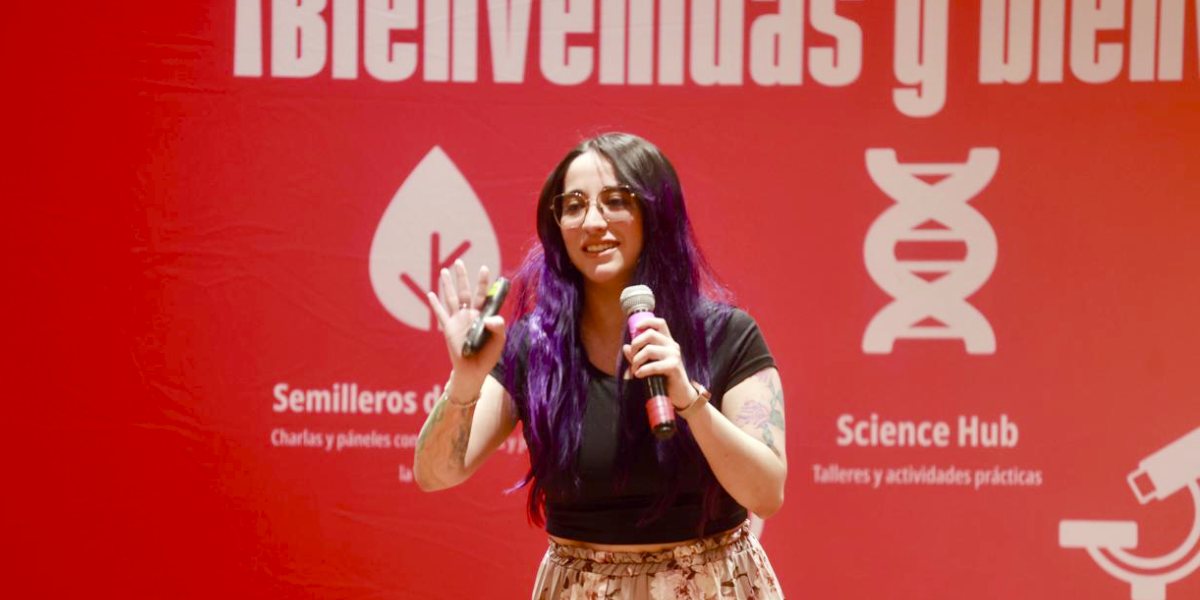
Reporter: Cecilia Balderas / Photographer: Israel Vera
Delivers a talk at Zacatenco as part of “Science Fest” 2025; Beakman takes the stage this Wednesday.
As part of Science Fest: Science Communication in Action 2025, organized by the Directorate for the Dissemination of Science and Technology (DDCyT) at the Instituto Politécnico Nacional (IPN), Jessica Lakshmi presented the talk “The ‘That’s Me’ Effect: Breaking the Academic Bubble”, which promotes a friendlier, audience-centered approach to science communication.
A graduate of the Escuela Nacional de Ciencias Biológicas (ENCB) with a Master’s degree in Chemical and Biological Sciences, Lakshmi has devoted recent years to science communication through her project Lakishimishi. This name reflects both her personal philosophy and her social media identity.
The science communicator explained that, within academia, scientific outreach often follows a hierarchical model rooted in power dynamics—one in which “someone knows, and the other learns.”
“I’m not saying we lack class consciousness, but I do think we should question it. If we define class consciousness as the ability to understand and recognize our position within the social structure, then we have to reflect on where we stand. In reality, those of us in academia are part of it because there’s only the bourgeoisie and the proletariat. Regardless of our degrees, we belong to the working class,” she said.
To transform this traditional way of doing outreach, Lakshmi encourages storytelling—sharing from lived experience rather than relying solely on definitions or rigid academic frameworks. She advocates for communicating from the audience’s context, since stories serve as a bridge to everyday life.
“In cognitive psychology, there’s something called the self-reference effect—the tendency to remember information more easily when we hear a story that relates to our own experiences. When that happens, the same brain regions linked to empathy, memory, and decision-making are activated. That’s how humans work: we see ourselves in others and connect more deeply through that recognition,” she explained.
Lakshmi also referred to the narrative processing theory, which suggests that people use stories to understand the world, themselves, and others. This approach, she noted, helps generate what she calls ‘the that’s me effect’—the moment when someone identifies emotionally or personally with what they see, hear, read, or consume.
So, how can this effect be achieved? She asked the audience. “By listening before trying to explain anything; by thinking about who we’re speaking to; by sharing from our own experience; by connecting with people, showing vulnerability, and acknowledging their prior knowledge,” she said.
The Science Fest activities will continue throughout the week until Sunday. Tomorrow’s guest is Beakman, the beloved character whose show aired for many years on Canal Once and inspired generations to discover the fun side of science.